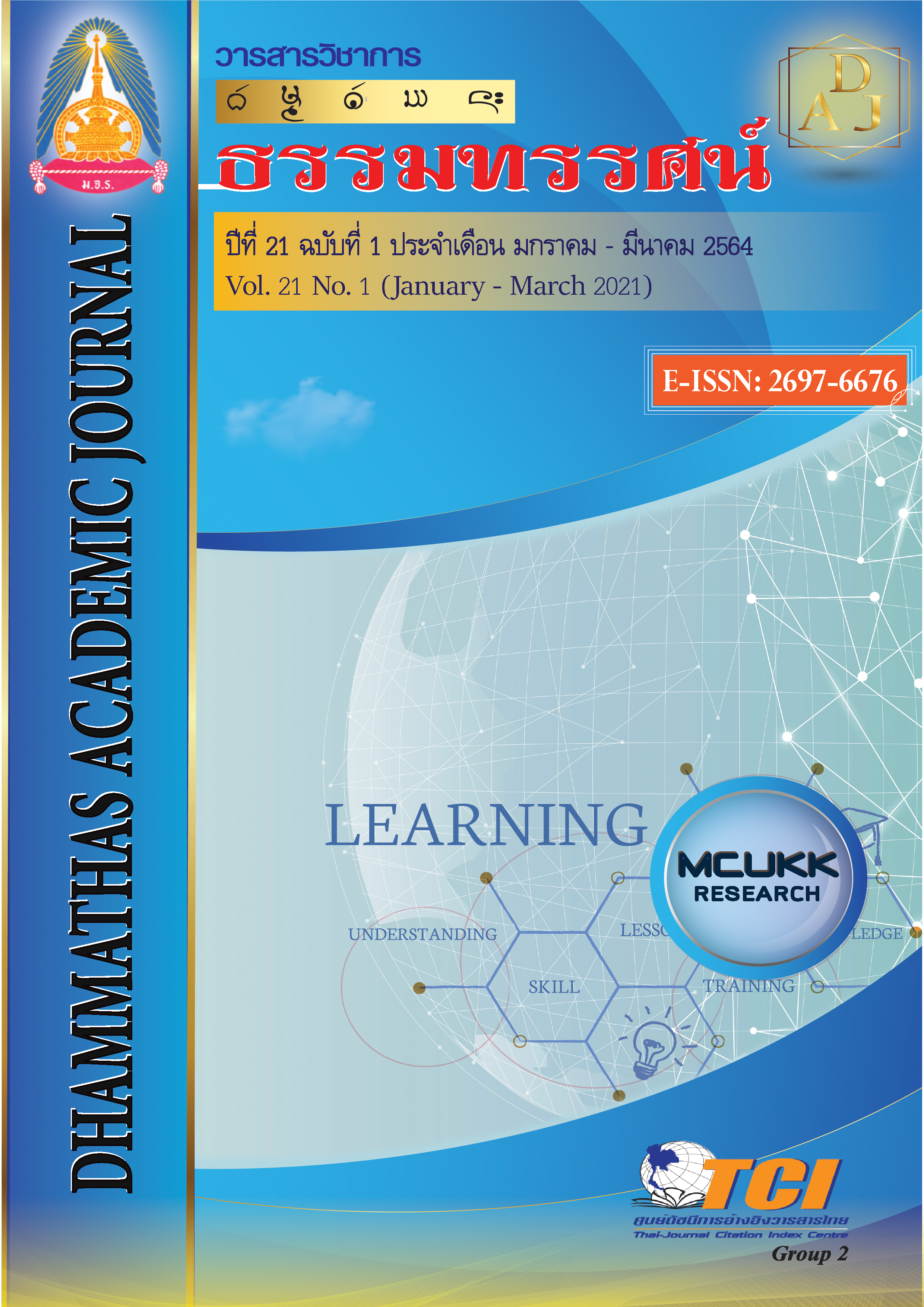The Analysis of Beauty of Charoenthongtham Temple’s Wooden Uposatha (Sim-mai) in Accordance with Idealistic Theories of the Donpor Village, Nongbuatai Sub-District, Sriboonruang District, Nongbualamphu Province
Main Article Content
Abstract
The aims of this research were: 1) to study the beauty in the theories of idealism; 2) to study the history and background of the Charoenthongtham temple’s wooden uposatha (sim-mai), Donpo village, Buatai sub-district, Sriboonruang district, Nongbualamphu province; 3) to analyze the beauty of the Charoenthongtham temple’s wooden uposatha in accordance with the theories of idealism. This study was conducted based on the qualitative research methodology. The data were presented by the descriptive analysis according to the inductive reasoning method.
The research results were as follows:
1. Theory of beauty in the view of idealism is viewed that the beauty occurs in the mind that human being makes judgement of it. In idealism, the aesthetic mood is divided into 6 items: 1) beauty; 2) the strangeness; 3) impressiveness; 4) satisfaction; 5) faith; 6) pleasure.
2. Charoenthongtham temple’s wooden uposatha (sim-mai) looks like a solid, built entirely from wood in 1946. It has architectural value of the northeastern folk artisan. The uposatha received registration from the Fine Arts Department on 20 August 2001.
3. The beauty of the wooden uposatha in accordance with the idealism viewpoint consists of six aspects: 1) it is a Buddhist art work that reflects the beauty in the mind; 2) the uposatha with a entirely built wooden structure with distinctions from the others; 3) it is built with Hopeaodoratawooden which is sacred wood according to the beliefs of the villagers; 4) it is a Buddhist art work that responds to the community; 5) it is built from the villagers' faith towards Buddhism; 6) beautiful giving a feeling of pleasure.
Article Details
References
เผด็จ สุขเกษม. (2535). รูปแบบสิมที่พบในจังหวัดหนองคาย. (วิทยานิพนธ์ศึกษาศาสตรมหาบัณฑิต). กรุงเทพฯ: มหาวิทยาลัยศรีนครินทรวิโรฒมหาสารคาม.
พระธรรมปิฎก (ป.อ.ปยุตฺโต). (2546). พุทธธรรม. (พิมพ์ครั้งที่ 10). กรุงเทพฯ: มหาจุฬาลงกรณราชวิทยาลัย.
พระไพรบูลย์ ปญฺญาโภ. (2557). การศึกษาวิเคราะห์คุณค่าทางสุนทรียในศิลปะลายสักของนายบุญเลิศ อนุศรี ตำบลบ้านกง อำเภอหนองเรือ จังหวัดขอนแก่น. (วิทยานิพนธ์พุทธศาสตรมหาบัณฑิต). ขอนแก่น: มหาวิทยาลัยมหาจุฬาลงกรณราชวิทยาลัย.
พระราชบัญญัติโบราณสถานโบราณวัตถุศิลปวัตถุและพิพิธภัณฑสถานแห่งชาติ พ.ศ. 2504. (2544, 21 ธันวาคม). ราชกิจจานุเบกษา. เล่ม 118 ตอนพิเศษ 127ง, หน้า 13-14.
พ่วง มีนอก. (2536). สุนทรียศาสตร์ (Aesthetics: A Theory of Beauty). (พิมพ์ครั้งที่ 2). กรุงเทพฯ: มหาวิทยาลัยรามคำแหง.
ลักษณวัต ปาละรัตน์. (2551). สุนทรียศาสตร์. กรุงเทพฯ: มหาวิทยาลัยรามคำแหง.
วสันต์ ยอดอิ่ม. (2544). สิมพื้นถิ่นในเขตภาคอีสานตอนบน. (วิทยานิพนธ์ศิลปศาสตรมหาบัณฑิต). กรุงเทพฯ: มหาวิทยาลัยศิลปากร.
วิโรฒ ศรีสุโร. (2540). สิม อีสาน (รายงานผลงานวิจัย). ขอนแก่น: มหาวิทยาลัยขอนแก่น.
อุดม บัวศรี. (2544). สัมมนาปัญหาปรัชญา (Seminar on Problem of Philosophy). ขอนแก่น: มหาวิทยาลัยมหาจุฬาลงกรณราชวิทยาลัย.

